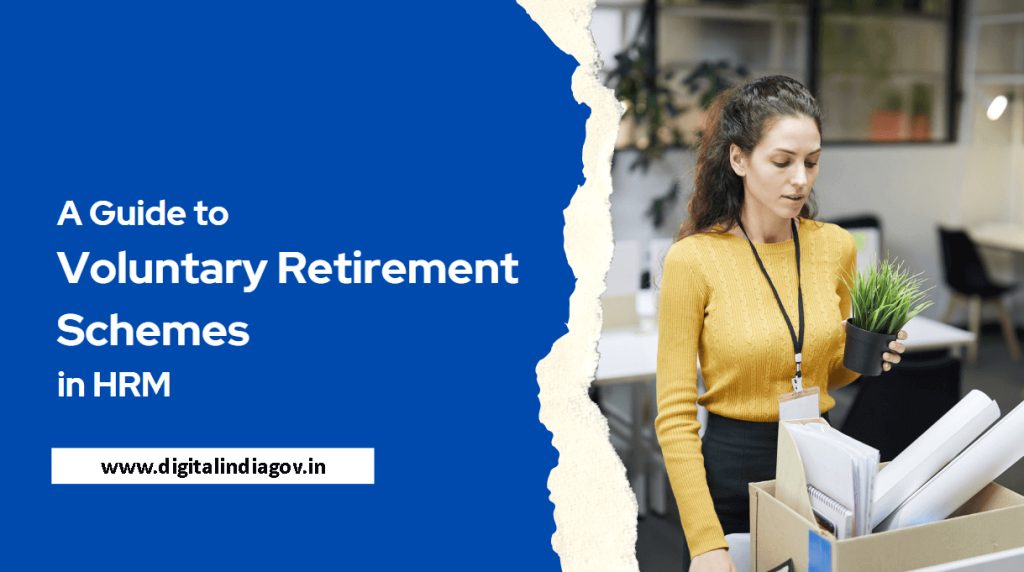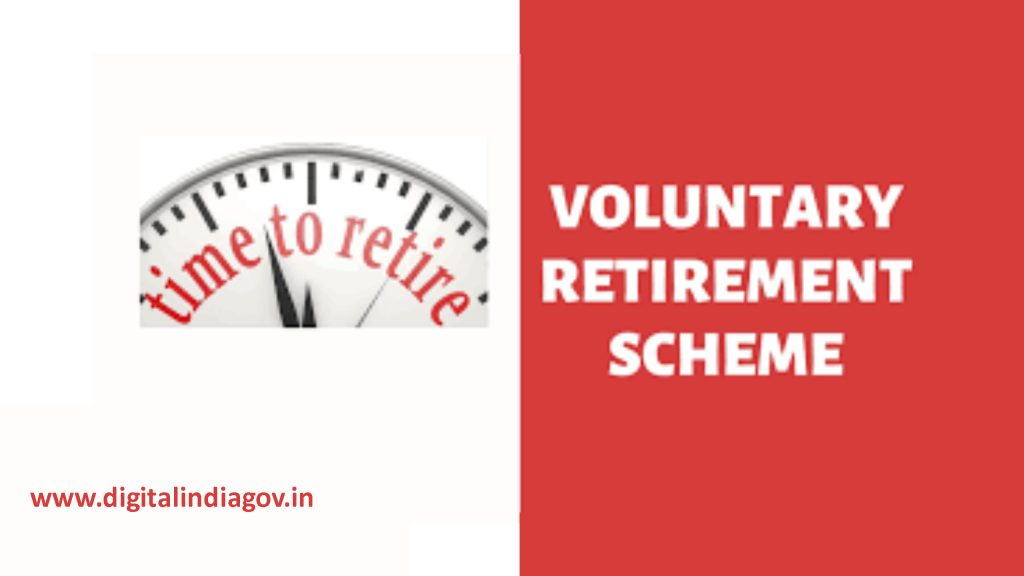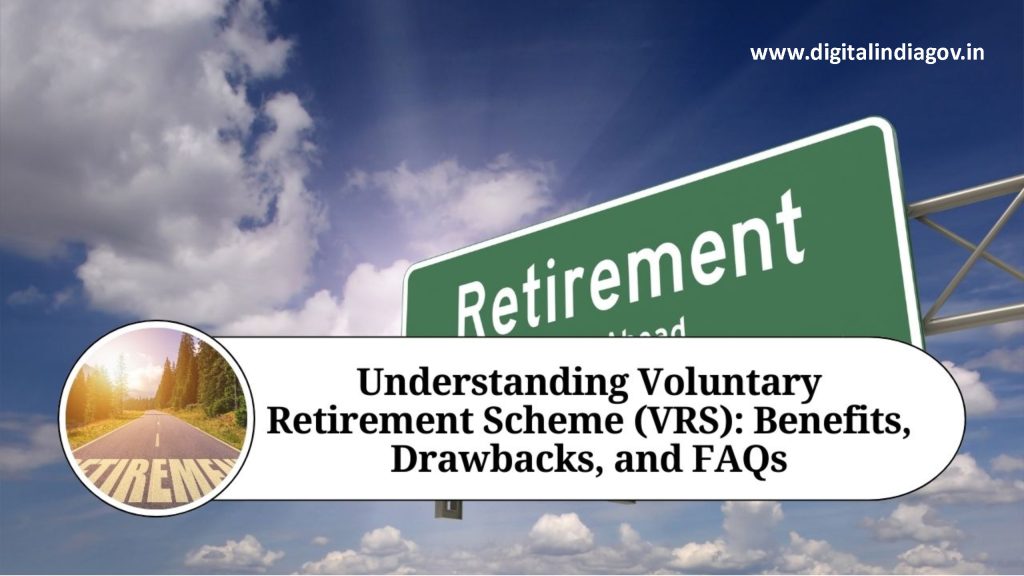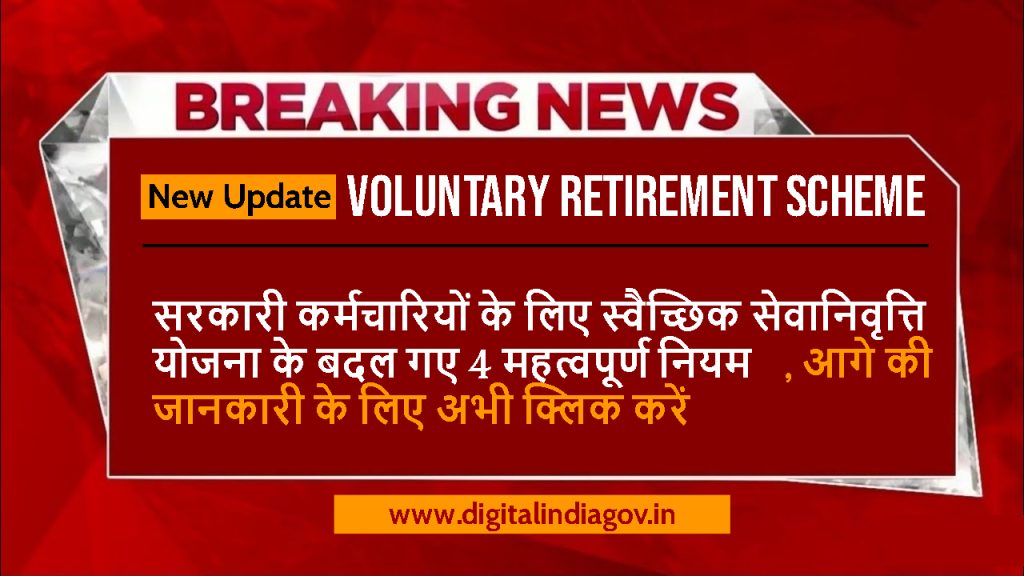Voluntary Retirement Scheme, Many organisations allow their employees to take a voluntary retirement before they reach retirement age through a program called a Voluntary Retirement Scheme, or VRS. Retirement is, as we all know, something that comes with getting older, but a lot of people want to retire far earlier. Employees are able to accomplish this through the voluntary retirement scheme, or VRS. The main goals of providing VRS to staff members are to assist companies in reducing the amount of unnecessary personnel, save money, and boost output.
Contents
What is a Voluntary Retirement Scheme (VRS)?
The Voluntary Retirement Scheme (VRS) allows employees to freely finish their service and take an early retirement, as the name implies. This program is provided by employers to their staff. When a business needs to reduce staff for a variety of reasons, including cost-cutting and burden-reduction, providing VRS to employees is a great way to ensure that they are benefiting and fulfilling their job requirements for the company.
The typical retirement age in India is between 58 and 60 years old, although under VRS, an employee may apply for voluntary retirement as early as 40 years old. VRS may be advantageous to the individual as well as the business, whether it is used for leisure or to pursue other interests. The organisation can remove superfluous staff and boost production while the individual pursue their hobbies and benefits from post-retirement. For this reason, a lot of businesses now provide VRSs or voluntary retirement schemes. However, in order to qualify for VRS, an employee must be above 40 and have worked for the company for more than ten years.

Also Read: HRIDAY Scheme, shaladarpanportalgov.com, yojanaforall.com, Onlinereferjobs
How does VRS work?
As mentioned above, employees who have worked for the company for more than ten years and who are over forty years of age may apply for the Voluntary Retirement Scheme or VRS. All employees, including executives and workers, are eligible to participate in this company-sponsored program. In terms of the business, VRS helps the business by cutting unnecessary expenses and surplus workload. A corporation must obtain government authorisation before providing VRS to its workers. The income tax regulations found in section 2BA are another item the business must take into account.
A stringent set of requirements must be met in order for the employee to utilise VRS provided by the company; specifically, the person cannot work for another company at the same time.
Objective of the Voluntary Retirement Scheme
The main goal of the Voluntary Retirement Scheme (VRS) is to benefit employers as well as employees. This program allows long-term employees of the company to stop their employment early and take voluntary retirement, which will allow them to take advantage of retirement benefits and pursue other interests.
How did VRS start in India?
As was previously said, many companies regularly find themselves in a situation where they have to cut costs and lay off employees. However, Indian legislation forbids such direct layoffs of employees. Actually, under the 1947 Industrial Disputes Legislation, it is specifically forbidden for employers and firms to retrench in order to reduce the excess workforce. Trade unions are fiercely against it. India created the Voluntary Retirement Scheme, or VRS, in response to this.

VRS benefits both the employees and the firm by resolving the issue of excess staff. Trade unions did not resist or oppose VRS much because this system is voluntary and not imposed upon the employees.
Features of Voluntary Retirement Scheme (VRS)
After learning what a voluntary retirement scheme, or VRS, is, let’s review some of its key characteristics. Before an employee may apply for VRS, they need to be aware of these features, which are as follows:
- The employee must be above 40 years old and have worked for the company for ten years in order to be eligible for VRS benefits.
- The employer must pay the employee’s provident fund and any outstanding debts as soon as the worker applies for VRS and decides to retire voluntarily.
- The corporation bears the additional duty of offering tax consultation and counselling to its employees in order to facilitate a seamless retirement process.
- The organisation is unable to fill the position left by an employee who retires under the VRS plan.
- Employees who have elected to take part in VRS are prohibited from working for the same management in another business.
- Additionally, workers may be compensated up to 5 lakhs of rupees. The employee must apply for VRS in the same year that they receive remuneration in order to benefit from this tax-free compensation.
Also Read: EPF Pension Scheme, Mobilenumbertrackeronline, indnewsupdates.com, ssorajasthanidlogin.com
Who Can Avail Benefits Of VRS?
As said before, both the company providing VRS and the employee using it may profit monetarily from it. Let’s examine each voluntary retirement perk that the individual and the business have taken advantage of separately.
Benefits that the employee received following their voluntary retirement
Following their voluntary retirement, the employee is eligible for the following benefits:
- Employees receive benefits for taking early retirement.
- Employees get provident funds and are obligated to offer gratuities.
- The organisation provides tax advice and counselling to the employee in order to ensure a seamless retirement.
- The worker may also receive pay that is exempt from taxes.
- For each year of service completed, the employee is eligible to receive 45 days’ compensation.

Benefit for the company utilising this scheme
Following the implementation of the VRS program, the following benefits accrue to the company:
- It aids in staff reduction and cost-cutting for the business.
- The business can boost productivity by utilising the money saved by employing this technique.
- The enterprise is exempt from labour union complaints.
- In a healthy approach, the corporation can let go of its personnel without jeopardising their relationships.
Eligibility criteria for a Voluntary Retirement Scheme (VRS)
The employee must meet the requirements in order to be eligible for the Voluntary Retirement Scheme (VRS). The following are the requirements to be eligible for the Voluntary Retirement Scheme, or VRS:
- The worker ought to have spent more than ten years in the service of the business.
- The worker must be at least forty years old.
- Except for the directors, all employees of the corporation are eligible to participate in the Voluntary Retirement Scheme or VRS.
What is a VRS’s method of compensating?
We’ve already talked about how employees can get paid on VRS. So how is this compensation calculated? Under the Voluntary Retirement Scheme (VRS), an employee’s compensation is based on their most recent income. Therefore, the employee’s annual wage would be equal to three months’ worth of remuneration, whichever the company offers. Another way to figure out the payout is to multiply the employee’s salary at retirement by the number of months they have left on their employment contract before their actual retirement date.
Also Read: SCSS Scheme In Post Office, digitizeindiagovin.com, Typingspeedtestonline, Nebsit Council
Conclusion
In conclusion, the Voluntary Retirement Scheme, or VRS, is a legitimate way for businesses to reduce their personnel surplus without negatively affecting the workers. Since this program benefits both employers and employees, it is regarded as the most thoughtful and practical way to reduce the excess labour force. The employer offering the voluntary retirement plan and the employees utilising it must be aware of its characteristics, the rules governing voluntary retirement, and the methods used to calculate compensation in order for them to benefit from it.
Faq’s
Q. In what full form is VRS?
Ans: The voluntary retirement scheme is the full name of the VRS.
Q. What is meant by VRS?
Ans: The term VRS stands for Voluntary Retirement Scheme, a program that enables employers to provide employees who have not yet reached retirement age with a voluntary retirement in order to reduce operating expenses in hard times.
Q. What are the guidelines for state government employees’ voluntary retirement?
Ans: By completing the VRS application form for state government employees, any employee of the government may choose to retire voluntarily. Three months or more before to the intended retirement date, this must be completed. Only once the employee has completed 20 years of service is it possible to do so, provided that no Departmental Enquiry has been opened or begun against them.
@PAY
